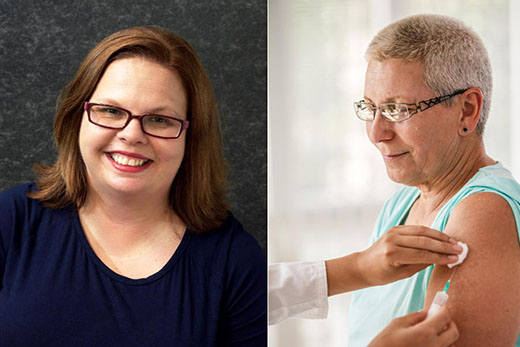Talking Flu Vaccine with U of M
September 23, 2020

Minneapolis, MN
Sep. 23, 2020
According to the U.S. Centers for Disease and Prevention (CDC), influenza (flu) viruses are most common during the fall and winter. The CDC has indicated it believes it’s likely that flu viruses and the virus that causes COVID-19 will both be spreading in the fall and winter.
Ann Philbrick with the University of Minnesota talks about the flu vaccine and the health benefits of getting routine immunizations.
Q: What is the purpose of the flu vaccine?
Prof. Philbrick: The flu vaccine contains inactive particles of the flu. When introduced into the body, the body develops an immune response to those particles to fight them off in the future.
Q: Who should get the flu vaccine?
Prof. Philbrick: Everyone ages six months and older should get the flu vaccine unless they have been told they should not by a medical provider. People with chronic medical conditions — such as diabetes — those who are pregnant, and those over 65 or younger than five years should really make an effort to get the flu vaccine annually.
Q: What are the health benefits of getting the flu vaccine?
Prof. Philbrick: It is important to get vaccines as recommended so you can protect yourself from the disease, but also protect those around you. Additionally, people who get the flu vaccine on a regular basis are less likely to get severe symptoms from the disease, should they happen to catch it.
Q: Where can people get the flu vaccine?
Prof. Philbrick: The two most common places to get routine vaccines are your primary physician’s office and at a community pharmacy. Sometimes workplaces will also have vaccination clinics, where they provide one type of vaccine to a lot of people. There are also a variety of types of flu vaccine, including the nasal vaccine and selections for adults over 65 years. Your physician or pharmacist should be able to tell you which is best for you and your health needs.
Recently the Department of Health and Human Services extended the opportunity to pharmacists to vaccinate children age 3 and older with any indicated routine childhood vaccine. This action was taken in order to increase access to childhood vaccines.
Q: What else are you doing to further public understanding of routine vaccines?
Prof. Philbrick: I like to promote the pharmacist as a valuable vaccine resource as pharmacists can sometimes be more accessible than a patient’s primary care provider. At the University of Minnesota, I teach the next generation of pharmacists about vaccine-preventable diseases so they can become advocates. Additionally, I teach an elective for pharmacy and nursing students to come together and provide flu vaccine to the University community through Boynton Health.
Ann Philbrick, PharmD, is an associate professor in the College of Pharmacy and the Medical School on the Twin Cities campus. Her expertise in pharmaceutical care encompasses routine immunizations, asthma, chronic obstructive pulmonary disease (COPD), comprehensive medication management, medical cannabis, diabetes, and hypertension. Philbrick’s research interests are refugee healthcare, experiential education of pharmacy students, and the role of a pharmacist in an interprofessional setting.
###
About “Talking...with U of M”
“Talking...with U of M” is a resource whereby University of Minnesota faculty answer questions on current and other topics of general interest. Feel free to republish this content. If you would like to schedule an interview with the faculty member or have topics you’d like the University of Minnesota to explore for future “Talking...with U of M,” please contact University Public Relations at unews@umn.edu.


